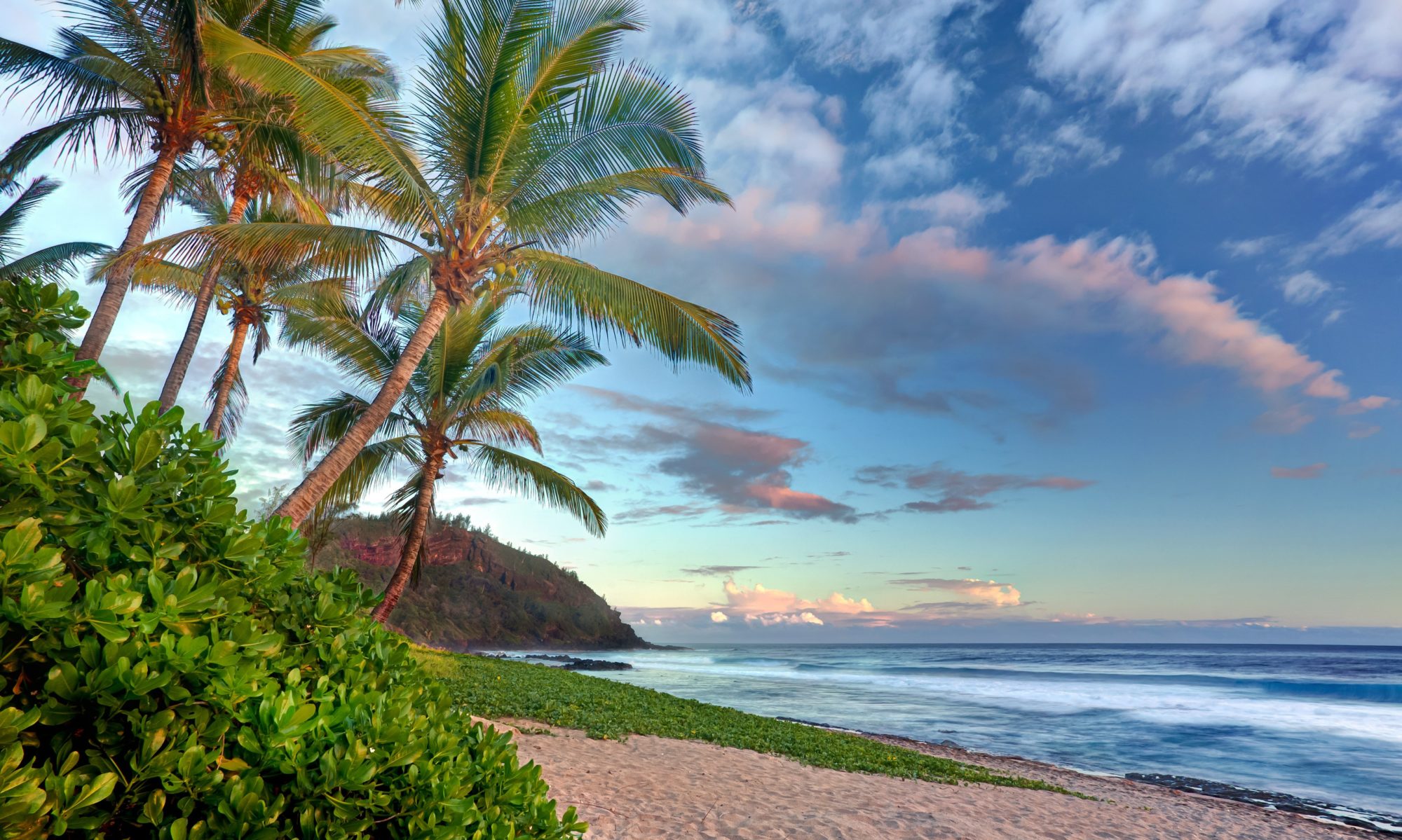 Before the Departure
Before the Departure
Make sure you have an identity card or passport valid. If you wish to visit neighboring countries passports will be mandatory. However, there is no obligation regarding vaccination.
Airport tax: included in the price of the ticket .
Right Hand Driving and national driver’s license – It is always advisable to have an international driving license in your possession (easily accepted everywhere and more easy to renew in case of loss or theft!)
 Entry Formalities
Entry Formalities
Visa: No prior visa requirement for nationals of countries of the European Union. The visa is affixed on the passport on arrival by the immigration authorities.
Supporting documents: You will be asked on arrival, to provide:
– The passport covering the entire stay,
– The return ticket,
– The supporting documents relating to accommodation costs,
– Hotel reservation or exact address and phone number of the harboring.
Vaccine: No vaccine is mandatory.
 Customs
Customs
Customs limitations: Transportation of liquid money of more or equal to an amount of 10,000€ must be declared at the customs.
It is forbidden to bring in Reunion fresh plant material: plants or parts of plants, bulbs, rhizomes, flowers, vegetables and fruits. These products must be sent through air or sea freight.
The import of perishable goods such as food are banned or severely regulated.
Due to the risk of introducing diseases, the importation of certain animal products in countries of the European Union is subject to some interdictions or strict procedures. Failure to report the transport of these products is punishable by a fine or legal prosecution.
Transporting bushmeat is thus strictly prohibited. Passengers violating this prohibition may face criminal penalties.
Allow to import from an ECE countries: 300 cigarettes , 2.5 liters of alcoholic beverages (+ 22 ° ), 75 grams of perfume , articles up to a value of 300 euros.
Outside the EU: 200 cigarettes, 1 liter of alcohol (+ 22 °), 4 liters of wine and 50 grams of perfume. You will have no rights or tax payable on goods whose value is less than or equal to: 430 euros, for travelers of 15 years and older and EUR 150 for travelers under 15 years.
 Currency Exchange
Currency Exchange
Currency: Euro (EUR)
Currency code : EUR
Exchange rate : EUR 1 = $ 1.10472 ; 1 USD = 0.905203 EUR (07.18.2016)
Euro is the legal currency. The automatic teller machines, called “ATMs” are well present on the Island and they accept most of the credit cards. However, do plan for some liquid money as some shops do not accept cheques from France. Holiday vouchers and meal vouchers are more accepted. For currency exchange, you will find two offices on the Island, at the Gillot Airport or at the harbor.
Warning: Existing exchange offices are not regularly open and banks are uncooperative .
Tipping: Tipping on Reunion Island is not frequent. However, if you wish, you can add something to the bill amount depending on the quality of service, hospitality and your mood, particularly in cafes and restaurants. Please know that the tip on the Reunion Island does not form part of the server’s salary as it is the case in many countries.
 Convenience
Convenience
Being entered
 Culinary Specialities
Culinary Specialities
 Specialities:
Specialities:
The basis of Reunion cuisine consists of onions, garlic, tomatoes, ginger and turmeric (kind of saffron) all called “curry” or “rougail « . We find among the Creole specialties, the chicken curry, sausage rougail or curry ti- Jacques boucané… just like its population, all of its dishes are a mix of spices and Indian, Asian and Arab flavours. We can also find some eccentricities for the Island’s own use like the consumption of wasps’ larva or “tangue” (animal from the hedgehog family). The sweeter palate will discover a multitude of sweets such as the honey candy, the pâté créole, ties candy, candy arrow-root… The punch and the mixed rhum (rhum in which we confire either plants or fruits) are unresistable aperitif drinks.
Food Taboo:
By its cultural and ethnic diversity, we find a number of food taboos in Reunion Island. For example the Christians, during their period of fasting and by their degree of devotion, refrain from consuming meat, dairy products, wine, oil and fish… The followers of Islam do not eat pork, nor that animal who has not be slaughtered as per the Islamic rites. The cponsumption of alcoholic beverages are forbidden to Muslims. La consommation des boissons alcoolisées est aussi interdite aux musulmans.
 Comportements & Environnement
Comportements & Environnement
Mode of living:
Reunion Island has become a paradise for the hikers and fans of mountain trail, with the illustrious race of the Grand Raid. The Island consists of an exceptional sports ground, a pool of champions, certainly the French’s best department of this hit parade. Indeed, every year Reunion Island host many high level competitions on land, but also at sea and in the air.
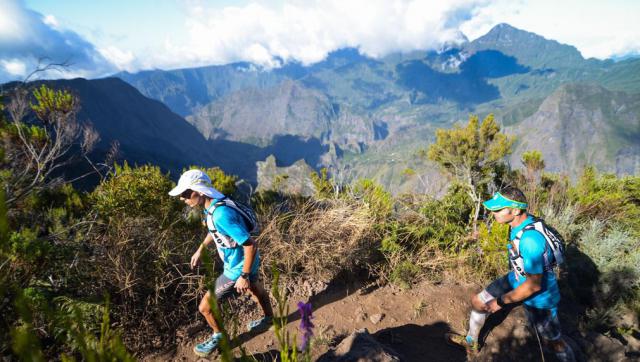
Inscribed in the traditions of Reunion Island, Sunday is the most important day of the week, it’s time for the whole family to get together around a mean often taken on picnic, on the beach, in the forest or on mountain!
Environment:
Reunion Island has an exceptional environment and sites of outstanding environmental and landscape quality. Like the Guyana, it has a very rich fauna and flora which are unique. There is a network of important biological reserves (7,000 ha) on the high forest areas which joins the coastline of major acquisitions of conservatory (Etang du Gol , Bois Blanc, Anse des Cascades , etc …) and the natural reserve of Saint. Philippe Mare-Longue (68 ha).
Reunion Island is an exceptional natural space, 35% of its total area is forested, covered by forests or primary vegetation. It is with its sister Islands where it has been ranked 34th in “high places” of global biodiversity.
The relief, coming from volcanic activity which is still very prolific today is very famous on the Island. It is the presence of the two huge mountains in the center of the island combined with the effects of the trade winds that allows more than a hundred micro- climates on the island.
” The Pitons, Cirques and Remparts of Reunion Island” are classified as World Heritage by the Unesco since 2010.
The Reunion Island is bordered on its west coast by coral reefs that form a natural protective barrier against sea attacks allowing the development of coastal areas of the island in Saint-Paul, Saint-Leu, Étang-Salé and Saint-Pierre. A marine natural reserve that covers 40km from the Cap La Houssaye to Saint-Paul and La Roche aux Oiseaux till Étang Salé has also been created in 2007 to protect the reefs. By their remarkable biodiversity (over 3500 species), they constitute the natural heritages, the landscapes and the remarkable cultures that delight the Reunion Island’s population and its visitors.
In terms of scientific research, Reunion Island benefit from the presence of many organizations, with, in particular the Volcanological Laboratory of Piton de la Fournaise, the meteorological center of Saint-Denis (4th center of the World Meteorological Organization which has the capacity to ensure the surveillance of cyclones for the whole Indian Ocean), the ORSTOM (especially for environmental monitoring by remote satellite sensing as part of the European program “Earthnet”, the University of Reunion (in the fields of earth sciences, biology and plant physiology and marine ecology) and the botanical conservatory of the mascarenes.
Saint-Pierre… a paradise for the children:
On the beach, the « brats” may burst in abundance with all kinds of games, in several areas dedicated to this function, and Free! Not far from the beach you can find bar trucks feasting with their various local culinary Specialities to all those hungry and regular people. Not to mention the rides, the track balls, the bike path, the picnic areas which get populated on the nightfall of the eve of public holidays in summer.
Cultural life:
Having its original contribution in the cultural diversity of France, Reunion’s culture is in itself a mosaic. Rich cultures received from Europe, Africa, Madagascar and Asia, the islanders have, in more than three centuries of common life, forged a lively creole culture, which, for fifteen years, becomes famous throughout the world.
The cultural life is characterized by great dynamism of all sectors of artistic expression, including music and visual arts.
The artists from Reunion Island have started to find recognition and audience beyond the island:
-for music: Daniel Waro, Gramoune Lélé, Ti-Fock, Ziskakan.
-for visual arts: Gilbert Calin, Jack Beng-Thi, William Zitte
-for literature: Boris Gamaleya (poet), Axel Gauvin (novelist), Jean -François Sam-Long (novelist).
-for painting: Charly Lesquelin
This creativity benefits from the continued financial support of the state and the local authorities, and above all a collective awareness of the cultural heritage where miscegenation is the foundation and whose enrichment occurred through the deepening of cultural exchanges, particularly in the Indian Ocean.
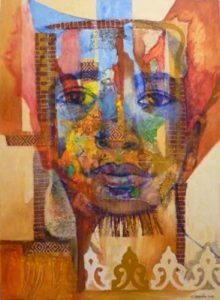
Cultural policies:
Unlike in France where the municipalities are the main public funding of the culture, in Reunion Island the Department and the Region are the first operators in the cultural sector (60 MF for the Department, 70 MF for the Region). A concerted politic is conducted by the state (20 MF) and the two main communities on common priorities, which are:
-The balanced territorial development. A considerable effort was made in terms of « heavy » equipment: 4 museums, 21 public libraries (four more under construction), 1 School of Fine Arts, one National Region Conservatory, several theaters. Under the Eleventh Plan, the effort will focus on reducing geographical imbalances by relocating activities, equipment and skills and decentralization of cultural offerings by supporting municipal facilities. The contract plan, the city contracts and the cultural agreements with the common aim to promote a gradual transfer of responsibilities in cultural matters to the municipalities. -The preservation of identity. It implies a necessary and concerted protection of historical, ethnological, linguistic (important because Creole has been long denied or repressed) and artistic of Reunion Island.
– The economic restructuring of the cultural sector. It goes through the professionalization of existing cultural actors and the creation of new jobs that demand more balanced regional planning and the opening of new sectors such as animation, heritage sites or cultural tourism.
– The role of culture in social programs and development strategies and the fight against exclusion, in particular those related to rural areas, poor neighborhoods, the prison population.
The many architectural witnesses of the colonial era, the remains of the East India Company and all the museums open on the island make Reunion Island of a cultural and interesting place. Among these museums, we should not miss especially the Léon DIERX museum (built around the impressionist collection of Ambroise Vollard), the agricultural and industrial museum, the first “major cultural project” in an overseas department, inaugurated in 1990 in an old sugar factory of Saint-Leu, or the house of the volcano, at Tampon. Finally the Regional Contemporary Art Funds (FRAC) at Saint-Paul and the communication house at Saint-Denis are not to be missed.
 Health
Health
No specific vaccination is required.
No major tropical disease has been currently reported in Reunion, despite of a small risk of dengue and chikungunya.
The medical system is identical to the system of France.
Social security coverage is the same as in a metropolitan department. For nationals of non- French European Union, think about getting the European Health Insurance Card disease called “Carte Vitale « .This is a free and personal card. Each family member must have his. Island hospitals are the best equipped of the Indian Ocean. Like any French department, you can easily find the general practitioners, the specialists and the pharmacies. The sanitary equipment of Reunion Island could be comparable to that of France. In 2015, it has 18 hospitals located throughout the country and representing a capacity of 4,120 beds. Among them, 2,440 are for the short stay, 730 for acute care and rehabilitation, 600 at the psychiatry and 360 at the maternity. The number of beds per 1 000 inhabitants was 2.5 in short stay (medicine and surgery). All municipalities have a health center including a mother and child protection unit.
 Security
Security
Do not leave anything in cars.
On the beach, do not leave your bags and objects without surveillance. .
Be careful of coconut trees. The sharp falls of coconuts had been the source of many materials and personal injuries, do not install yourself or park your car under a coconut tree.
Avoid having contact with the corals and other aquatics specimens while in the sea. They can be venomous or even poisonous for others.
On some beaches of the island the currents can surprise you and take you quickly. Stay informed by the signs and the flag regarding the conditions for bathing. Do not swim out of the lagoons and in the murky water.
In terms of road safety, be very careful on the main roads of the coast, and on the winding roads of the heights and the plains. The weather conditions are sometimes dangerous (fog, strong swell, screes).
 Cost of Living
Cost of Living
Accommodation:
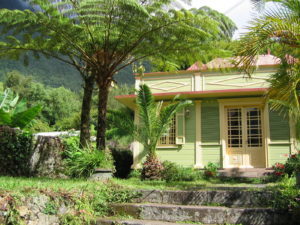 The choice of accommodation on the island is diverse, ranging from the hotel room to camping sites. Rates are variable depending on the area of the island. Hotel prices on the west coast are the most expensive. To get a better rate, you will find seasonal locations in the heights of the Island which are also nice.
The choice of accommodation on the island is diverse, ranging from the hotel room to camping sites. Rates are variable depending on the area of the island. Hotel prices on the west coast are the most expensive. To get a better rate, you will find seasonal locations in the heights of the Island which are also nice.
Camping and bivouac:
The camp is only permitted for a single night by the ONF. It is recommended to bring its wood and coal and make a fire in the spaces provided for this purpose. The authorized bivouac will usually be signaled by a pictogram. Be careful though because this type of accommodation does not guarantee any safety.
The lodges and the shelters:
These facilities are located around the track. They offer you the basic comfort. They include barracks or dormitories with bathroom in common. Some serve the evening meal and breakfast. There are approximately thirty in the island. The advance booking is strongly recommended. The rates are established around € 15 for a dorm bed, € 17 for dinner and € 5 for breakfast and double room with shared sanitary, € 40 a night.
The guest house:
This is the type of accommodation that most of the holidaymakers prefer. They are scattered all over the island, but principally in the heights. It offers the opportunity to discover the Creole fashion life immersed in the culture. Prices rarely exceed more than 60 € for a double room.
Seasonal rentals:
Apartments, furnished houses, bungalows and flats are usually rented during week days or in week-ends. It is interesting for families who are on holidays, some are labeled ‘Clévacances’ or ‘Gîtes de France’. Seasonal rentals going from studio to villa are being proposed by individuals or agencies. You can find rentals for the night, week or month. For example, count 260 € the week for two people in a 2 stars rental.
Hotels:
They are mainly located near the beaches but are found in all parts of the island. There for all budgets: from small board to the luxury hotel.
Economic Budget:< 35 €
Means Budget : 40-90 €
Superior Budget : 100-250€
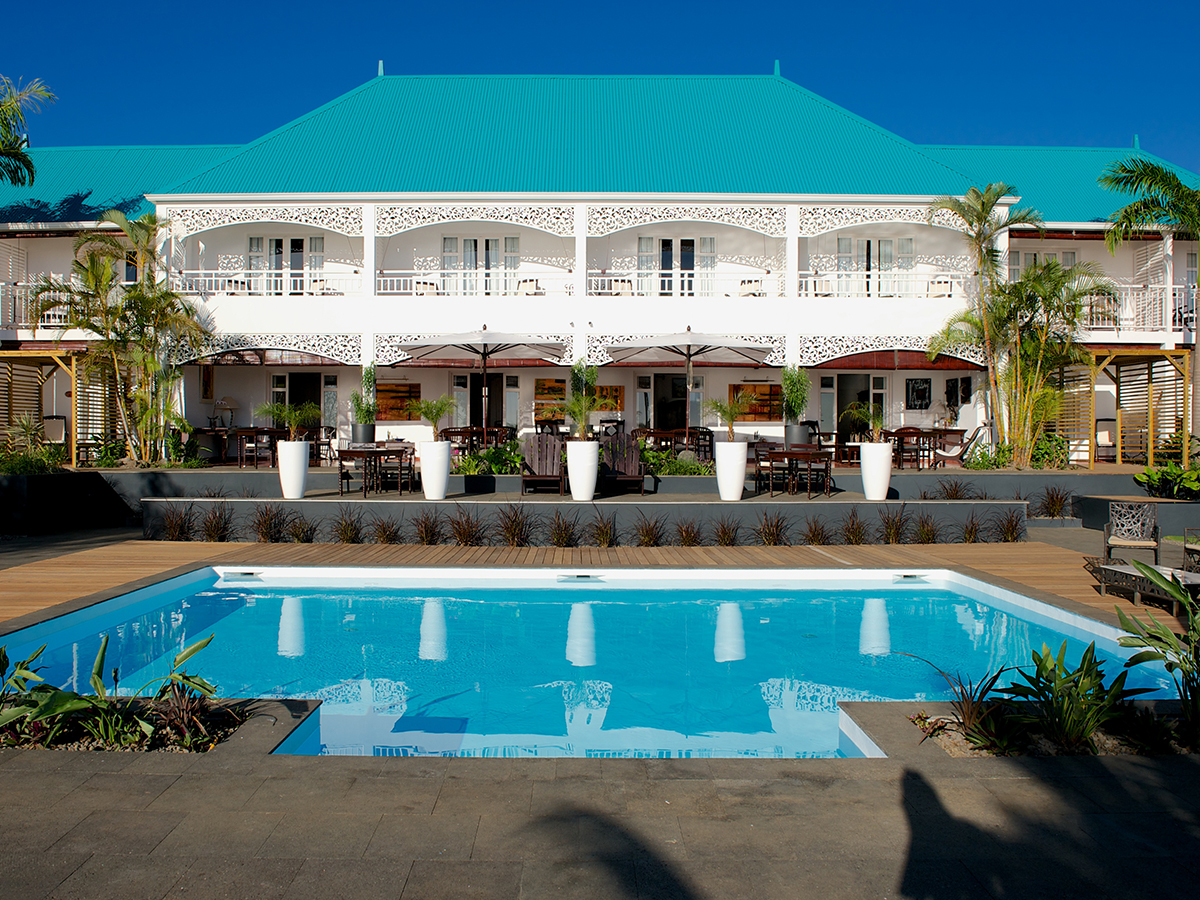
Cost of living:
Life is more expensive in Reunion Island than in France. Most of the consuming products come from outside of the Island, thus, we need to add the product off tax for the transportation cost to Reunion Island (By plane or even by boat), from which is added the VAT, the dock dues and also the different margins of the various intermediaries.
However, the fish is much cheaper, the pork is excellent and also cheaper. There is no or little cost for heating and no road costs.
| Some examples of the products: | In Reunion Island | In France |
| Perrier (1 liter) | 1.45€ | 0.67€ |
| Stirred Yoghurt Nature (pack of 12) | 3.45€ | 1.85€ |
| Shells (1 kilo) | 1.43€ | 0.89€ |
Dinning:
table side, count between 5-10 € for a single dish with drink, especially in takeaway restaurants.
More economical and accessible to all, sandwiches, samoussas and plugs are available everywhere on the island.
In restaurants, for a full menu it takes:
Economic Budget: 25 €
Means Budget : 20-25 €
Superior Budget : >25€
 Trips
Trips
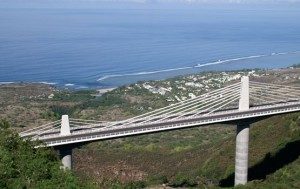 “Route des Tamarins”
“Route des Tamarins”
Traffic jams on the island during peak hours are very common. Avoid taking the road towards Saint- Denis, Saint -Pierre and the west coastline between 7am and 9 am and leave between 16:30 and 18pm.
Despite the cyclones and the tropical climate, the road network of the island is in pretty good condition. The famous coast road is protected by deflectors nets and walls against falling rocks. When the weather conditions deteriorate, a tilting system is set up. (Sea side after heavy rain and mountain side in case of heavy swell). This can cause big traffic jams in the area.
Transports:
Car Hire:
We find car rentals from € 15 per day, but more generally count between 20 and 25 €.
Renting a basic vehicle for the day is for an average of 45 € (excluding airport tax), except for the holders of cards Air Austral, Air Mauritius etc… The airport tax varies according to the lessor and amounted to average of 29 € for any vehicle parked on site. It is updated annually and may vary. You can avoid paying it by removing your vehicle to an agency located outside the airport.
Taxi:
The average cost is between 25 € to 35 €.Taxi routing: St. Pierre – Gillot (St Denis) or vice versa, count about 120 to 150 € per person.
Bus:
The Island is well connected throughout with buses. The price for a ticket for all age varies across sectors. (For more information, Article Common Transport). Time and tariffs for the yellow car which serve all the major cities of the island:
http://www.cg974.fr/index.php/Horaires-des-Cars-jaunes.html
Plane:
The island has two airports: Saint-Pierre and Gillot. It takes an average flight duration of 11 hours to join the European cities. Flights depart daily to various destinations of the Indian Ocean.
 Education
Education
Education is the same as in France , except for the school calendar that includes a vacation for the austral summer (December to February) and others at the end of the school year (early August to early September). For the 2013-2014 school year, pre-primary and primary education brought together 119,141 students in 523 schools. Secondary education has 101,015 students in 140 schools (83 schools, 47 high schools). There are also two agricultural high schools which prepare a BEPA (Certificate in agricultural vocational education) for operating, (Specialty: production option horticulture) and a BTA (Certificate in agricultural technician) in the same field as for a BTSA (Certificate in higher agricultural technician).
Bac 2016: the graduation rate for the baccalaureate is 86.5 %.
In 2013, the University of Reunion Island had 12,204 students spread within 3 UFR (training and research unit):
– Law, Science Economic and Politics (PhD level, DESS and also the preparedness for the entrance examination at the national school of judiciary and the training center for lawyers).
– Science (Masters or Doctorate as regards to the trainings). Furthermore it is also possible for students to take a preparation course to compete for the access to the second year of medical or dental studies.
– Arts and Humanities (level Bachelor, Master or Doctorate as regards to the trainings). Finally, a University Institute for Teacher Training (IUFM) was opened in 1992.
 Our sense
Our sense
Being entered
